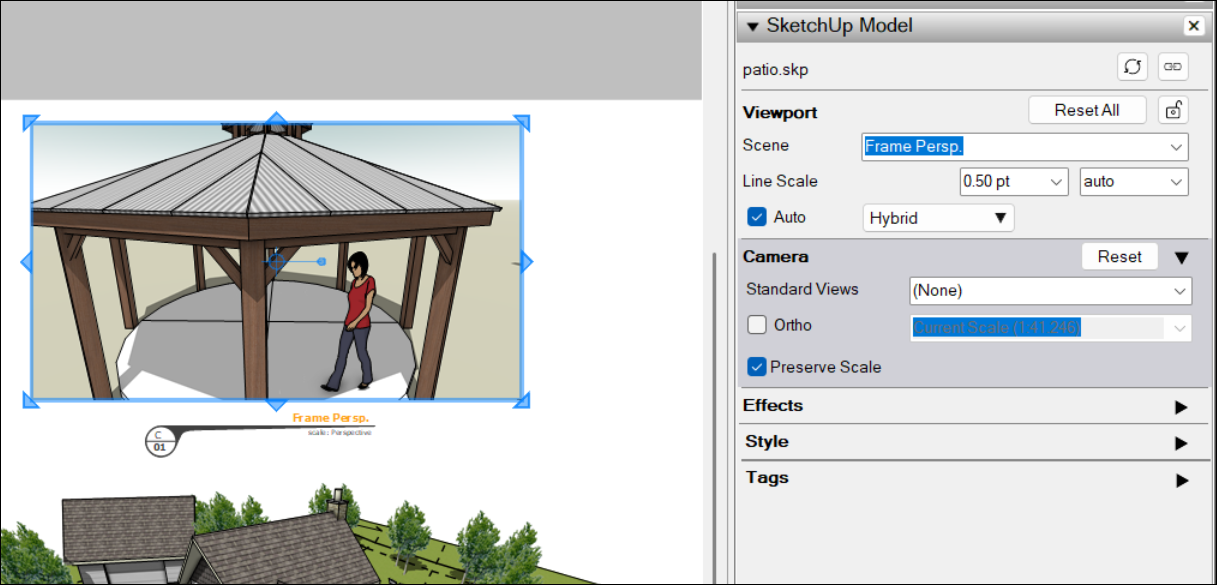SketchUp Models in LayOut
SketchUp and LayOut are designed to work together. When you bring a Sketchup model into your LayOut document you can make changes to that model without going back to SketchUp. You can then sync up both your LayOut document and SketchUp file, sharing changes across both.

These articles can help you better understand how to get started using SketchUp models in Layout, and the options available in the SketchUp Model panel:
- Importing a SketchUp Model – Learn how to easily import a SketchUp model into your document.
- Viewport Camera Tools – How to access and use the tools you need to change the view of a SketchUp model in a LayOut document.
- Selecting Scenes – Learn how to switch between saved scenes in your model, changing its view in your LayOut document.
- Perspective and Scale – Different views can affect the scale in your model.
- SketchUp Model Effects – Manage environments, shadows, and ambient occlusion effects in the models you’ve added to your document.
- Applying SketchUp Styles – How to apply and change styles in SketchUp model viewports.
- Rendering Models – How to make sure any changes are rendered correctly.
- Managing Changes and Updates to SketchUp Files – Learn what happens when you make changes to a SketchUp model in LayOut and how you can sync those changes between the two applications.
- Working with Dashes in SketchUp Files – Learn how to make the most out of the styling and linework in your SketchUp model.
